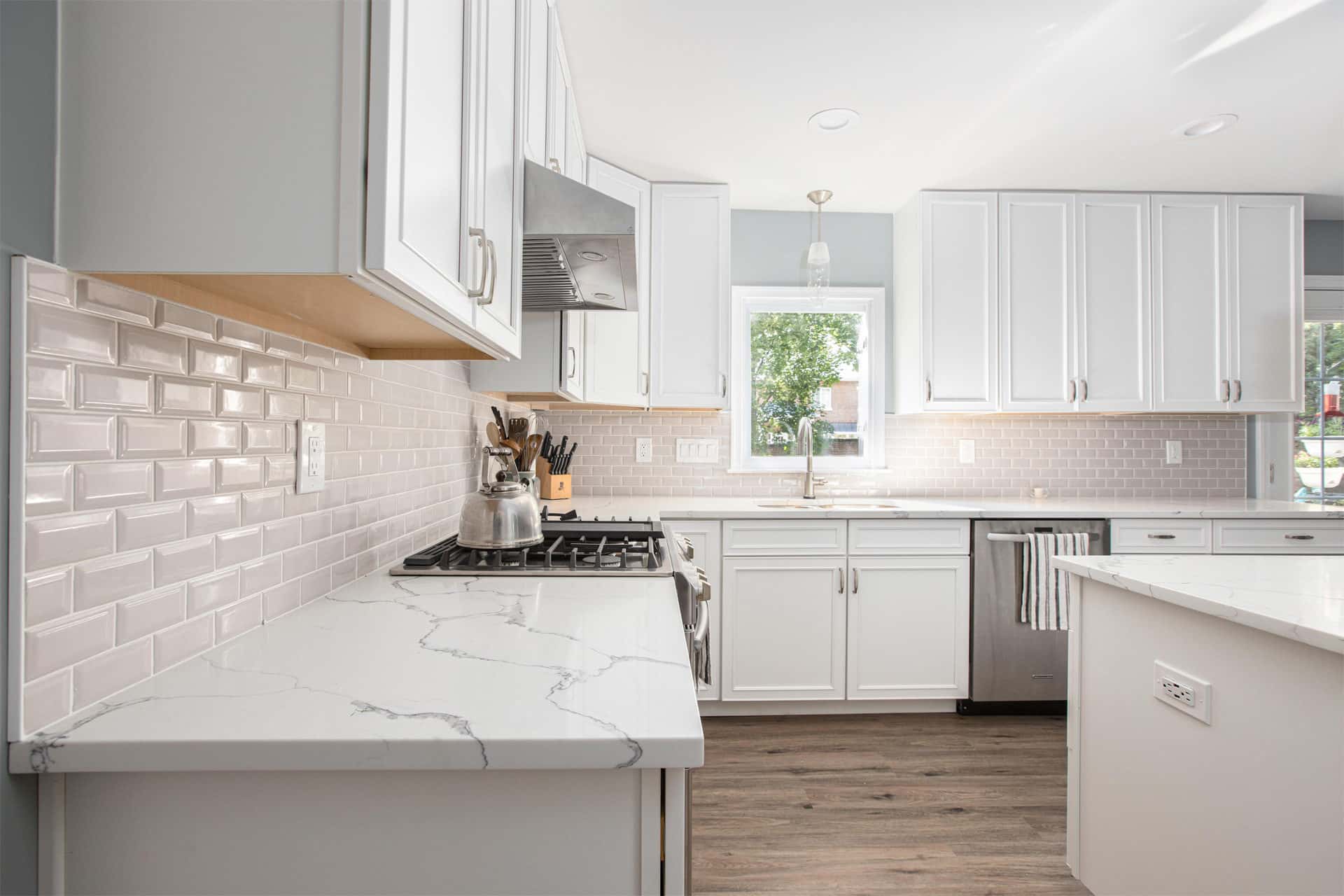The textures in a kitchen or bathroom can have a big impact on the overall design of the space. By incorporating different textures into the design, you can create a dynamic and interesting space that feels warm, welcoming, and visually engaging. Whether you’re designing a new space from scratch or simply looking to update an existing kitchen or bathroom, there are a variety of creative ways to add texture to the space that can enhance its aesthetic appeal and functional value.
What is Texture in Kitchen and Bath Interior Design?
Texture in kitchen and bath interior design refers to the surface quality of the materials used in the space. It can be visual or tactile, and can be used to add depth and interest to a space. Texture can be created through the use of different materials, such as wood, stone, metal, or tile, and through the use of different finishes, such as matte, glossy, or textured.
Incorporating Texture in Kitchen Design
When it comes to kitchen design, texture can add warmth, depth, and interest to the space. Here are some creative ways to incorporate texture in kitchen design:
Use Natural Materials
One of the easiest ways to add texture to a kitchen design is by incorporating natural materials such as wood, stone, and brick. These materials are tactile and have visual interest, and can add warmth and character to the space. You can use wood for flooring, cabinets, or accents such as shelving or a wood range hood. Stone can be used for countertops, backsplashes, or accent walls, and brick can be used for a backsplash or accent wall.
Incorporate Textured Finishes
Textured finishes can also add depth and interest to a kitchen design. Consider using stucco, plaster, or distressed or rough-hewn wood finishes for walls or accents. These finishes can add a rustic, natural look to the space, and can be complemented by more modern elements such as sleek stainless steel appliances.
Add Decorative Elements
Decorative elements such as tiles, wallpaper, and textiles can also add texture to a kitchen design. Consider using patterned tiles for a backsplash, textured wallpaper for an accent wall, or a woven rug or textured curtains for window treatments. These elements can add color and pattern as well as texture to the space.
Mix and Match Materials
Mixing and matching materials can also create a sense of texture in a kitchen design. Consider combining different materials such as wood, metal, and stone to create a visually interesting and dynamic space. For example, you could use a wood floor, stone countertops, and metal fixtures for a modern, industrial look.
Incorporating Texture in Bath Design
Texture can also be incorporated into bath design to add warmth, depth, and interest to the space. Here are some creative ways to incorporate texture in bath design:
Use Natural Materials
Natural materials such as stone, wood, and marble can add texture and sophistication to a bathroom design. You can use stone or marble for flooring, shower walls, or countertops, and wood for cabinets or accents such as a wood-framed mirror.
Use Textured Tile
Tile can be used to add both color and texture to a bathroom design. Consider using mosaic tiles, textured subway tiles, or patterned tiles for a backsplash or shower surround. You can also mix and match different tiles to create a visually interesting and dynamic space.
Incorporate Decorative Elements
Decorative elements such as wallpaper or textiles can also be used to add texture to a bathroom design. Consider using textured wallpaper for an accent wall or adding a woven rug or textured shower curtain to the space. These elements can add visual interest and warmth to the space.
Add Lighting
Lighting can also be used to add texture to a bathroom design. Consider adding a pendant light with a textured shade, or using wall sconces with textured glass shades to create a warm and inviting atmosphere.
Consider Architectural Features
Architectural features such as archways or built-in niches can also add texture to a bathroom design. These features create depth and interest in the space and can be used to display decorative objects or store towels or other bathroom necessities.
Examples of Textures Suitable for Kitchen and Bath Design
There are many textures that are suitable for kitchen and bath design. Here are some examples:
Stone
Stone is a great texture for both kitchen and bath design. It adds depth, warmth, and sophistication to the space. Use stone for countertops, flooring, or shower walls.
Wood
Wood is another great texture for both kitchen and bath designs. It adds warmth and character to the space. Use wood for cabinets, shelving, or flooring.
Tile
Tile is a versatile texture that can be used in both kitchen and bath designs. Consider using textured or patterned tiles for a backsplash or shower surround.
Metal
Metal is a great texture for a modern, industrial look in both kitchen and bath design. Use metal fixtures or accents to create a sleek, sophisticated look.
Glass
Glass can add texture and interest to a bathroom design. Consider using textured glass for a shower enclosure or using glass tiles for a backsplash.
Conclusion
Incorporating texture into your kitchen and bath design can add warmth, depth, and interest to the space. By using a variety of materials, finishes, and decorative elements, you can create a visually dynamic and interesting space that feels comfortable and welcoming. Whether you choose to use natural materials, decorative elements, or architectural features, texture can add a unique and personal touch to your kitchen and bath design. So get creative and start experimenting with different textures to create a space that feels truly unique and beautiful.
